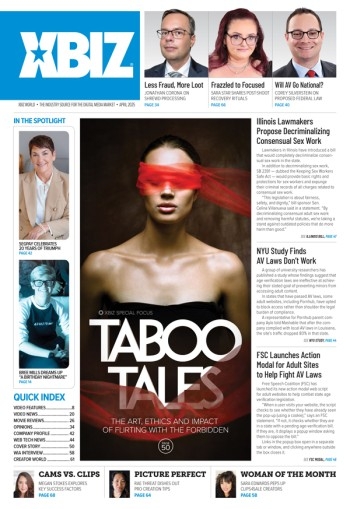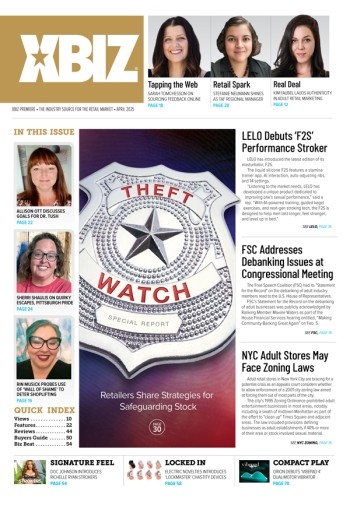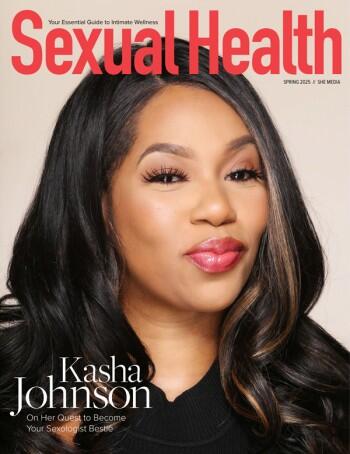We all know that certain colors are synonymous with the business of love and lust. Given that you’ll be reading this in the run up to Valentine’s Day there will be no escape from red. Even outside of your erotic store, it’s the primary color for cards, vouchers, roses, heart-shaped balloons and all sorts of other objects and images. You don’t see green or yellow hearts. And when something is considered very exciting, intense, or passionate, it’s said to be “red hot.” I’m sure it’s no coincidence that 80 percent of Ferraris are sold in its rosso corsa paint scheme: more commonly known as “Ferrari red.”
Sure, there are other colors regularly employed by our industry, and if accepting of color psychology, seem fairly logical to use in creating an illogical and thoroughly emotional attitude and subsequent response among target audiences.
So is red now an outdated, clichéd color in the business of love and lust, and the erotic retail industry in particular?
Black is invariably the color of mystery, luxury, sophistication and exclusivity. Think of black-tie events, or the AMEX black card (only available by invitation). Close to this is silver (think of “silver service”) or platinum (also heavily used by credit card companies and other service providers). And yes, I know the last two are metals rather than colors per se, but we’ll not split hairs at this moment in time.
Arguably at the other end is virginal white: associated with purity, weddings, and a bit of a contrasting trope when it comes to erotic entertainment or media. And the antithesis to red hot lovin’? A case of the blue balls. Yep, there’s those colors once more used to considerable effect in conveying an image or feeling.
Two rather pertinent questions subsequently arise. Are these colors now clichéd? And secondly, to what extent should new industry entrants use color to their advantage?
We’re already seeing adult products — along with the accompanying packaging — shunning the brash, bold primary colors and shades in favor of more neutral tones. Brands such as the Dodil and Chakrubs make perfect examples. Furthermore, many of these products — especially those commanding premium prices — could easily be mistaken as both a pleasure product and objet d’art to be proudly displayed in someone’s chamber and not out of place in a swanky interior lifestyle magazine, rather than normally hidden away inside the bedside drawer.
So is red now an outdated, clichéd color in the business of love and lust, and the erotic retail industry in particular?
One could simply respond by highlighting the number of centuries these color associations have already existed for. They’ve survived this long for good reason. Good luck to anyone intent on usurping these associations: they’ll be bankrupt before making a dent.
Please also note that these “traditional” colors are representative of sensations or experiences as a whole, regardless of individual consumer gender (I’ve written elsewhere on the whole “blue is for boys and pink is for girls” issue).
In short, yes, they’re clichéd. I’m certainly not going to deny it. But there’s absolutely nothing wrong with clichés if through association they convey and engender positive urges, sensations and experiences. Either way, when they’ve lasted this long, they’re not going to disappear in our lifetimes: you can count on it. Bottom line: when clichés are this successful and positively perceived, don’t even think about discarding them.
Playing devil’s advocate for a moment (and being rather silly too), imagine some future dystopian, PC-gone-mad society: a combination of George Orwell’s “1984” and Aldous Huxley’s “Brave New World.” The powers that be are eradicating symbolic old color associations. On a huge stage with thousands sat below, a speaker announces: “The new color of love, passion and relationships is … [pause for dramatic effect] … ochre."
Nah, me neither. But back in the here and now, what about at an individual company level? Should adherence to these colors be requisite or should they instead strike out fearlessly with a new color identity?
Adopting red especially will associate you with the business of love and lust — of that there’s no doubt. But am I not always advocating to zig when everyone else is zagging? Doesn’t this fly in the face of such advice? Not when it's the most powerful link, such as between the color red and love or lust. Don’t try to challenge this.
But there are still different ways of forging a unique identity for your company. Just like Jennifer Aniston in those hair product ads, “here’s the science bit.”
When it comes to human cognition, color is actually second in line: we mentally process shape first. Need proof? Look no further than Nike’s iconic swoosh. From repeated exposure (for some, this may be a matter of decades) we don’t need the name Nike spelled out to know which brand of running shoes or sweatpants are being worn: one single swoosh now conveys everything.
So, first things first, have a great, distinctive shape or object as part of your visual identity. Then comes color. And finally comes form (content and language: your company or brand name). So, even if you initially think you’ll be unable to stand out from the crowd, by adhering to red, black, or white, you’ve got two other variables — big ones at that — to forge something really unique from. Make it worthwhile!
What this means is that when combined with the other elements of the marketing mix, there’s opportunity for these well-known colors to be employed, but you’d have to be the first in the particular niche you’re aiming to fill. There will be plenty of other companies employing black if offering premium product ranges in any given category. By all means you can use black too if you’re similarly offering upmarket products or services — provided it’s not in the same category as the other company already employing black — even though shape and form may differ.
Again, we can look at other industries to see examples. Pepsi arguably could never freely compete with Coca Cola until it ditched red (or most of it) from its brand identity. Going even further afield (pun partially intended), as John Deere tractors already owned green — the best color for agricultural machinery, given the associations with green grass and nature — there was no way Ford tractors could compete by similarly adopting green. John Deere would indirectly still benefit. Ford had no choice but to choose an entirely different color — blue. While it lacked a strong color association, at least there was no way people would confuse Ford for John Deere.
So, by all means, stick to those tried-and-tested colors of love and lust, or those conveying key traits. But, be mindful of your immediate competitors and the visual identity they possess, and cognitive processing — shape, color and form — when it comes to your own.
Brian Gray — founder and head consultant at Lascivious Marketing, based in Glasgow — helps manufacturers, wholesalers and retailers in the adult industry improve their marketing performance through strong brand creation, better customer understanding and insight, tailored marketing planning and communications through focused effort. He can be contacted at lasciviousmarketing.com, found on Instagram @LasciviousMarketing or phoned on +44 (0)141 255 0769.








